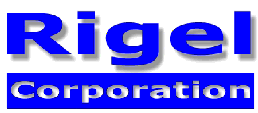
FAQs for those new to Embedded ControlTable of Contents
- What is a Microcontroller?
- What is Embedded Control?
- How Do I Get Started?
- What Kind of Background Do I Need?
- What Software Languages Will I Learn?
- What Hardware Components Will I Work With?
- What if I Need Help?
- I Want to Develop My Own Application!
- What if I Need Help Developing My Own Application?
- What is the Intel Hex Format?
What is a Microcontroller?
A microcontroller is a highly integrated computer microchip. Besides a microprocessor, it includes several peripherals such as memory, clock oscillator, input and output ports, timers, counters, analog-to-digital converters, and serial ports. These peripherals allow the microcontroller to be interfaced with physical equipment, such as sensors, motors, solenoids, keypads and displays. Back to TopWhat is Embedded Control?
Embedded control means that the electronics, most often built around a microcontroller, are physically placed inside the device it runs. The microcontroller is dedicated to run that device. For example, cell phones have embedded controllers to manage the keypad and display, or cars have embedded controllers that run the engine ignition and fuel injection systems. Back to TopHow Do I Get Started?
Rigel Corporation offers educational kits for schools, universities, and hobbyists, with self-paced tutorials that teach you the basics of microcontrollers and embedded control. These kits contain the hardware, software, and input sensors and output actuators to get you started. Back to TopWhat Kind of Background Do I Need?
In order to get started you need to have a background similar to a high school student. Typical electronics enthusiasts or hobbyists will have no difficulty completing the experiments. Back to TopWhat Software Languages Will I Learn?
Introductory educational kits from Rigel Corporation allow you to develop code in assembly, 'C' and BASIC. Although some familiarity with a programming language would speed up your course, the kits are designed so that first-time programmers may follow the experiments. In fact, many schools use our kits to teach their first programming course. Back to TopWhat Hardware Components Will I Work With?
Our kits contain the most often used hardware components: motors, displays, keypads, sensors, etc. Projects are built around these hardware components. Again, no specific hardware background is necessary to start learning embedded control. Back to TopWhat if I Need Help?
Rigel provides technical support by phone, FAX, and e-mail. E-mail is our preferred method for handling technical questions since we can send software routines, hyperlinks, and lengthy answers more readily by e-mail. But we understand that some of those burning questions need to be answered by phone and so you may call us 9-5 EST 5 days a week. Back to TopI Want to Develop My Own Application!
Many of our customers have bought our educational kits in order to learn embedded control, with the sole purpose of developing their ideas into commercially viable products. Once you run through the books and understand the material you should be able implement your own idea or modernize an existing product to turn it into a "smart" device. Back to TopWhat if I Need Help Developing My Own Application?
You can always contact Rigel Corporation for technical advice and help. Rigel has over 12 years experience in developing and manufacturing industrial embedded control systems. We've seen just about everything and if we can't answer your question we can a least direct you to someone who can. Back to TopWhat is the Intel Hex Format?
The Intel HEX file is an ASCII text file with lines of text that follow the Intel HEX file format. Each line in an Intel HEX file contains one HEX record. These records are made up of hexadecimal numbers that represent machine language code and/or constant data. Intel HEX files are often used to transfer the program and data that would be stored in a ROM or EPROM. Most EPROM programmers or emulators can use Intel HEX files.Here is an example hex file:
:10008000AF5F67F0602703E0322CFA92007780C361
:1000900089001C6B7EA7CA9200FE10D2AA00477D81
:0B00A00080FA92006F3600C3A00076CB
:00000001FFNow look at the top line...
The first character (:) indicates the start of a record.
The next two characters indicate the record length (10h in this case).
The next four characters give the load address (0080h in this case).
The next two characters indicate the record type (see below).
Then we have the actual data.
The last two characters are a checksum (sum of all bytes + checksum = 00).
The last line of the file is special, and must end with an end-of-file (EOF) record. This record must have the value 01 in the record type field. An EOF record always appears as follows:
:00000001FF
Record types:
00 - Data record
01 - End of file record
02 - Extended segment address record
03 - Start segment address record
04 - Extended linear address record
05 - Start linear address record
Back to Top
Have more questions? Just e-mail us at techsupport@rigelcorp.com